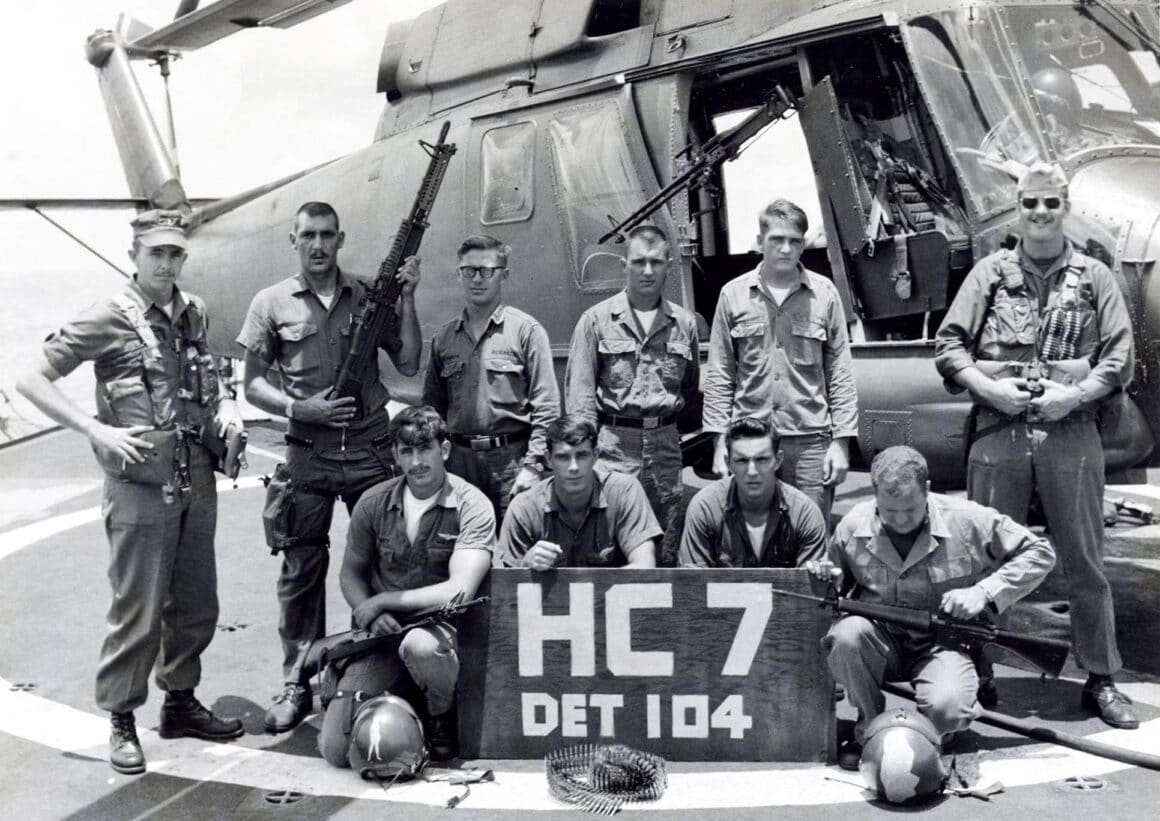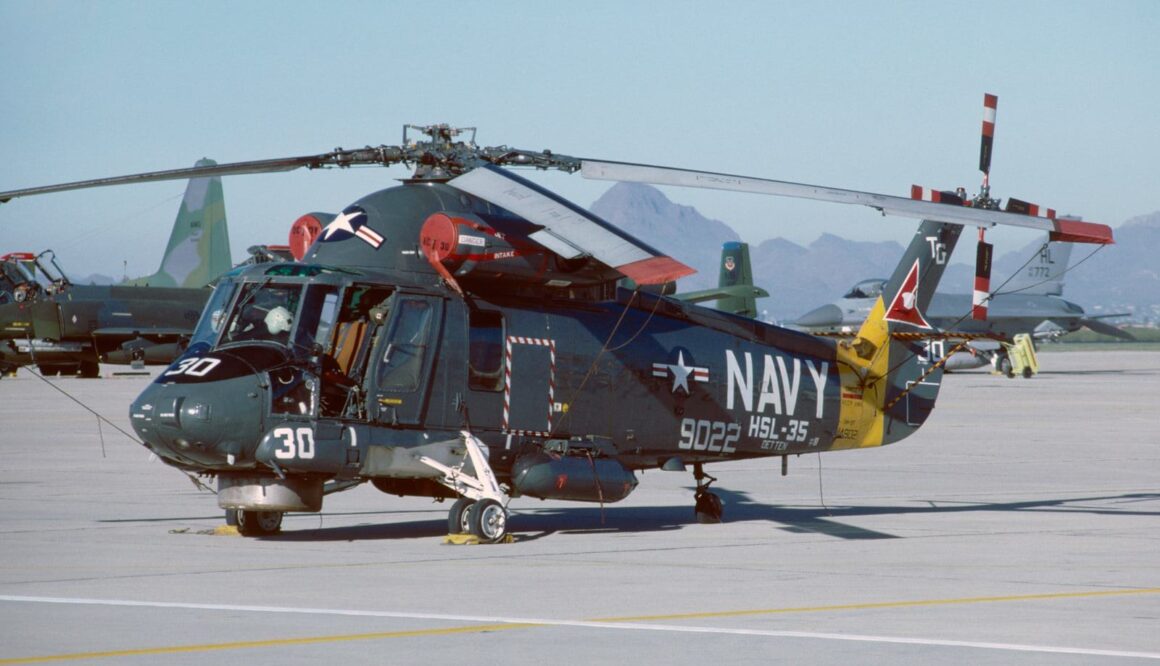Going to War in Vietnam
Seasprites went to war in Vietnam aboard both aircraft carriers and escort ships. UH-2As, UH-2Bs, and UH-2Cs performed plane guard and general utility work from the carriers and combat search and rescue (CSAR) from the carriers as well as the escorts. HH-2C Seasprites were modified to incorporate additional armor and door-mounted 7.62 millimeter machine guns for self-defense.
Detachments of UH-2s were assigned to and based aboard the escorts with flight decks large enough to accommodate them. UH-2s retrieved downed aircrews from the Tonkin Gulf and from contested enemy territory.

Medal of Honor Rescue
During one CSAR mission on 19 June 1968, Lieutenant Junior Grade (LTJG) Clyde E. Lassen and his crew, Co-pilot LTJG Clarence “Leroy” Cook, AE-2 Bruce B. Dallas, and ADJ-3 Donald West, flying a HC-7 Detachment 104 Seadevils UH-2A (callsign Clementine 2) from the escort ship USS Preble (DLG-15), performed a daring night rescue of two downed Naval Aviators under fire for which Lassen received the Medal of Honor.
The Seadevils performed no fewer than 148 CSAR rescues during the war in Vietnam while flying a mix of UH-2A, UH-2B, UH-2C, HH-2C, and Sikorsky SH-3 Sea King CSAR rotorcraft. HC-7’s Clementine callsign became another nickname for the Seasprite.

Focusing on the Submarine Threat
The UH-2 was selected to be the platform to function as the interim Light Airborne Multi-Purpose System (LAMPS) helicopter in October of 1970. LAMPS came about because of the need to provide an antisubmarine helicopter capability for escort ships that were not classed as aviation ships. These LAMPS Mark I Seasprites, designated SH-2D, were equipped with advanced sensors, including Texas Instruments ASQ-81 Magnetic Anomaly Detection (MAD), DIFAR sonobuoys, a Marconi LN-66HP surface search radar in a circular ventral fairing, and the necessary processors and display capabilities.
A pair of Mark 46 torpedoes and/or auxiliary fuel tanks could be carried as well. In sum the SH-2D extended the acoustic detection and prosecution range of the ships working with them.

Rebuilding and Improving
The first SH-2D LAMPS prototype flew for the first time on 16 March 1971. Deliveries of the SH-2F (nearly all of which were rebuilt earlier variants) began in May of 1973. SH-2 Foxtrots included the sensor suite from the SH-2D along with uprated T58 engines, an extended-life main rotor system, increased maximum takeoff weight, and sensor improvements including General Instruments ALR-66 ESM system, the Teledyne ASN-123C tactical navigation system, Collins ARC-159(V)1 UHF radios, a Texas Instruments ASQ-81(V)2 MAD, 15 DIFAR and DICASS sonobuoys, forward-looking infrared (FLIR), chaff/flare dispensers, dual rear-mounted IR countermeasures, and missile and mine detecting equipment. LAMPS Seasprites also carried an operator for these mission systems.

The Super Seasprite
The ultimate SH-2 variant, the SH-2G Super Seasprite, powered by General Electric T700-GE-401/401C turboshaft engines, flew for the first time on 2 April 1985. The 24 SH-2Gs went into service with Naval Reserve squadrons such as HSL-84 Thunderbolts beginning in 1993. Australia, Egypt, New Zealand, Peru, and Poland have operated or operate the SH-2G Super Seasprite.

